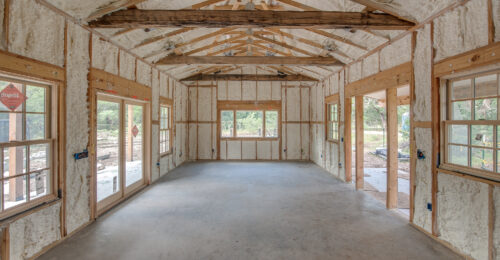



BASF offers a complete portfolio of open-cell and closed cell spray foam products for all commercial and residential applications.

ENERTITE® is a low-density, open-cell spray polyurethane foam (SPF) insulation that provides air sealing, sound absorption and thermal insulation, allowing you to better control your indoor environment and create more energy efficient, comfortable and healthier homes and buildings. Applied as a liquid, this water-blown foam quickly expands to many times its original size, completely filling wall and roof cavities. ENERTITE® easily seals difficult-to-reach areas such as corners and around pipes and wiring to create a seamless seal against air movement.

WALLTITE® is a closed-cell spray polyurethane foam (SPF) insulation that creates a seamless, insulating air barrier to improve the energy efficiency, comfort and durability of homes and buildings. Spray applied as a liquid, WALLTITE flows in and around difficult to reach areas, creating a airtight seal.

SKYTITE® high-performance roofing systems provide seamless, leak-free protection from the elements with some of the highest wind uplift and hail resistance ratings in the industry. Spray-applied, the exterior low-slope roofing systems are self-flashing and easily conform to unusual shapes. SKYTITE can be applied to existing substrates, eliminating the need to costly tear-offs and reducing waste in landfills.

ENERTITE® is a low-density, open-cell spray polyurethane foam (SPF) insulation that provides air sealing, sound absorption and thermal insulation, allowing you to better control your indoor environment and create more energy efficient, comfortable and healthier homes and buildings. Applied as a liquid, this water-blown foam quickly expands to many times its original size, completely filling wall and roof cavities. ENERTITE® easily seals difficult-to-reach areas such as corners and around pipes and wiring to create a seamless seal against air movement.

WALLTITE® is a closed-cell spray polyurethane foam (SPF) insulation that creates a seamless, insulating air barrier to improve the energy efficiency, comfort and durability of homes and buildings. Spray applied as a liquid, WALLTITE flows in and around difficult to reach areas, creating a airtight seal.

SKYTITE® high-performance roofing systems provide seamless, leak-free protection from the elements with some of the highest wind uplift and hail resistance ratings in the industry. Spray-applied, the exterior low-slope roofing systems are self-flashing and easily conform to unusual shapes. SKYTITE can be applied to existing substrates, eliminating the need to costly tear-offs and reducing waste in landfills.

ENERTITE® is a low-density, open-cell spray polyurethane foam (SPF) insulation that provides air sealing, sound absorption and thermal insulation, allowing you to better control your indoor environment and create more energy efficient, comfortable and healthier homes and buildings. Applied as a liquid, this water-blown foam quickly expands to many times its original size, completely filling wall and roof cavities. ENERTITE® easily seals difficult-to-reach areas such as corners and around pipes and wiring to create a seamless seal against air movement.

WALLTITE® is a closed-cell spray polyurethane foam (SPF) insulation that creates a seamless, insulating air barrier to improve the energy efficiency, comfort and durability of homes and buildings. Spray applied as a liquid, WALLTITE flows in and around difficult to reach areas, creating a airtight seal.

SKYTITE® high-performance roofing systems provide seamless, leak-free protection from the elements with some of the highest wind uplift and hail resistance ratings in the industry. Spray-applied, the exterior low-slope roofing systems are self-flashing and easily conform to unusual shapes. SKYTITE can be applied to existing substrates, eliminating the need to costly tear-offs and reducing waste in landfills.


